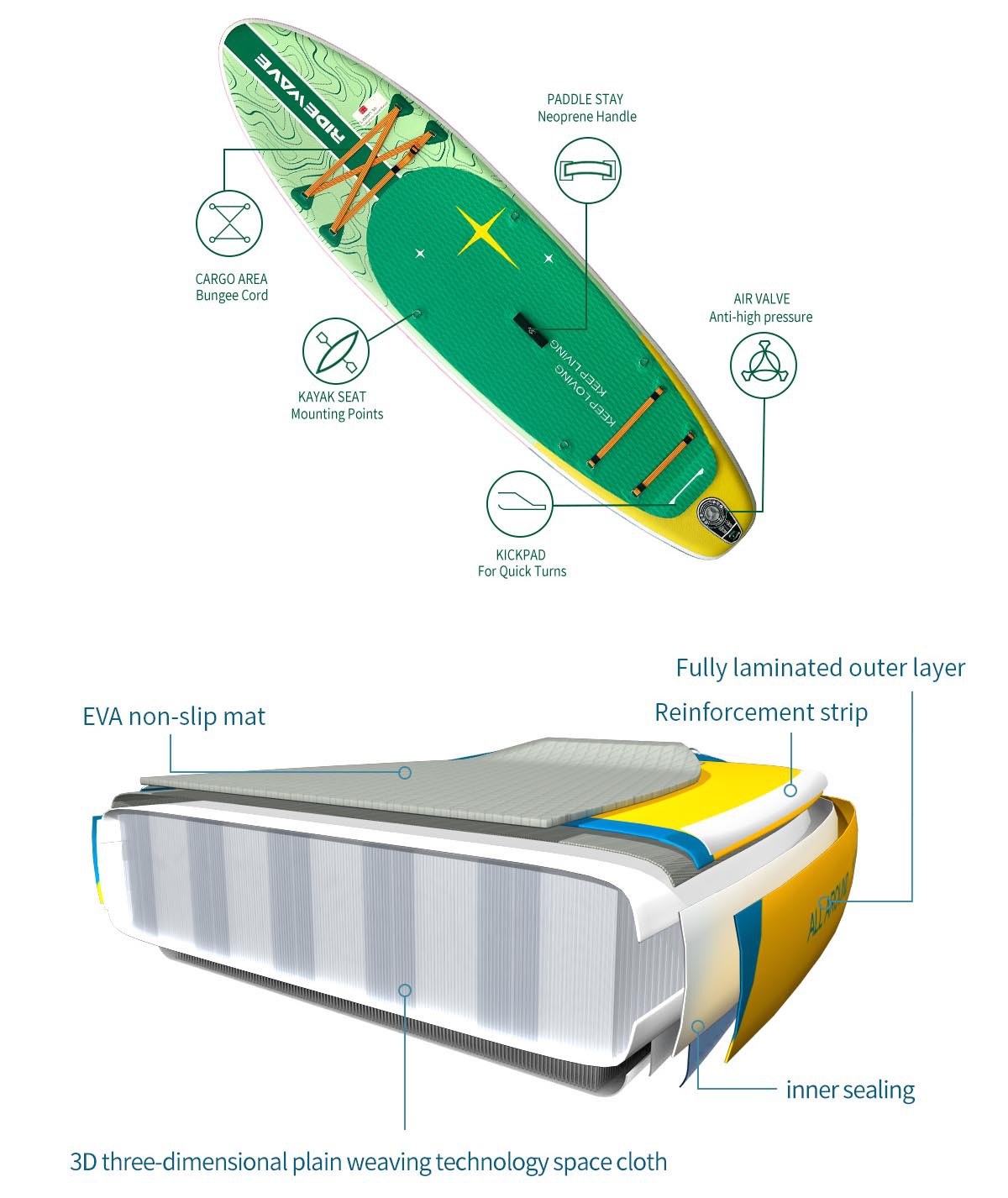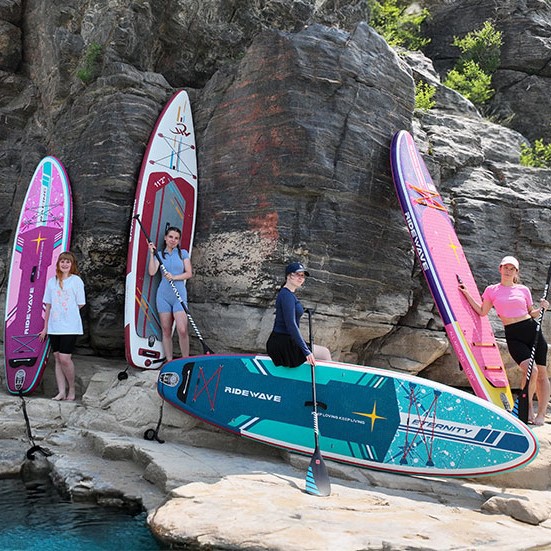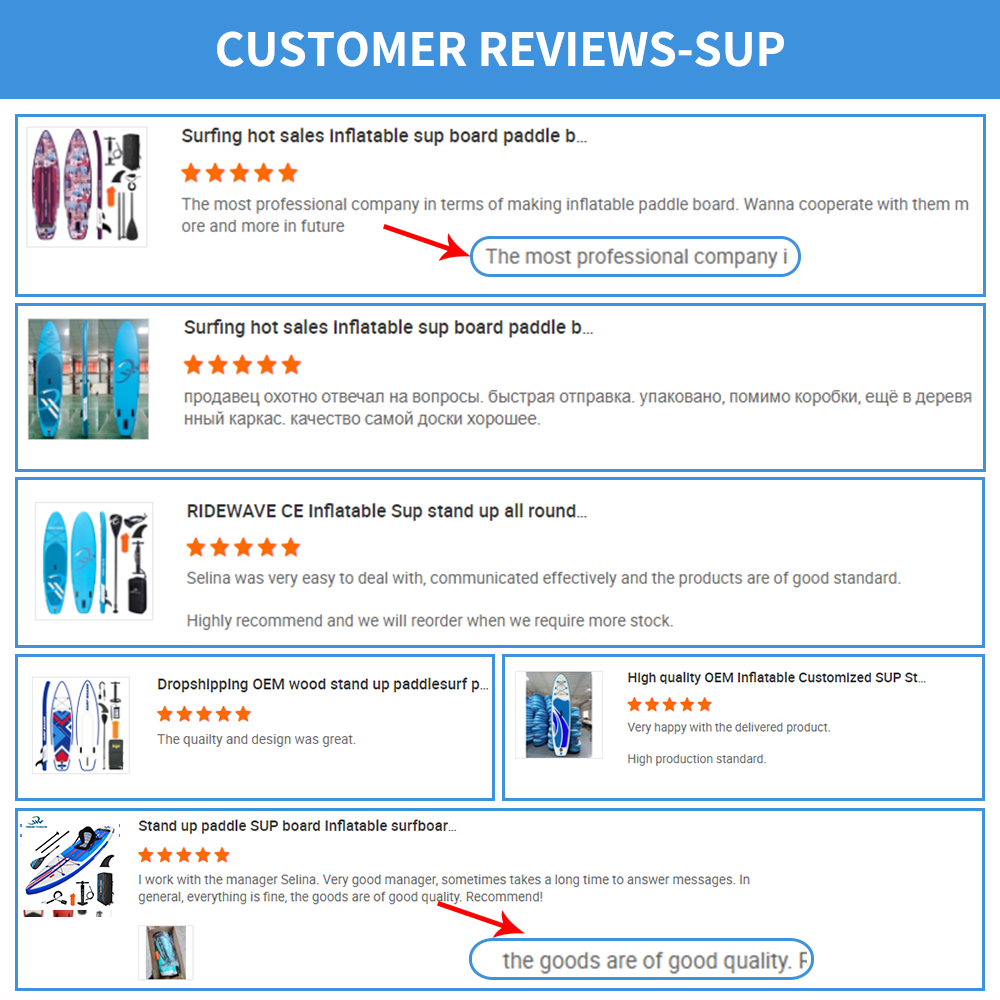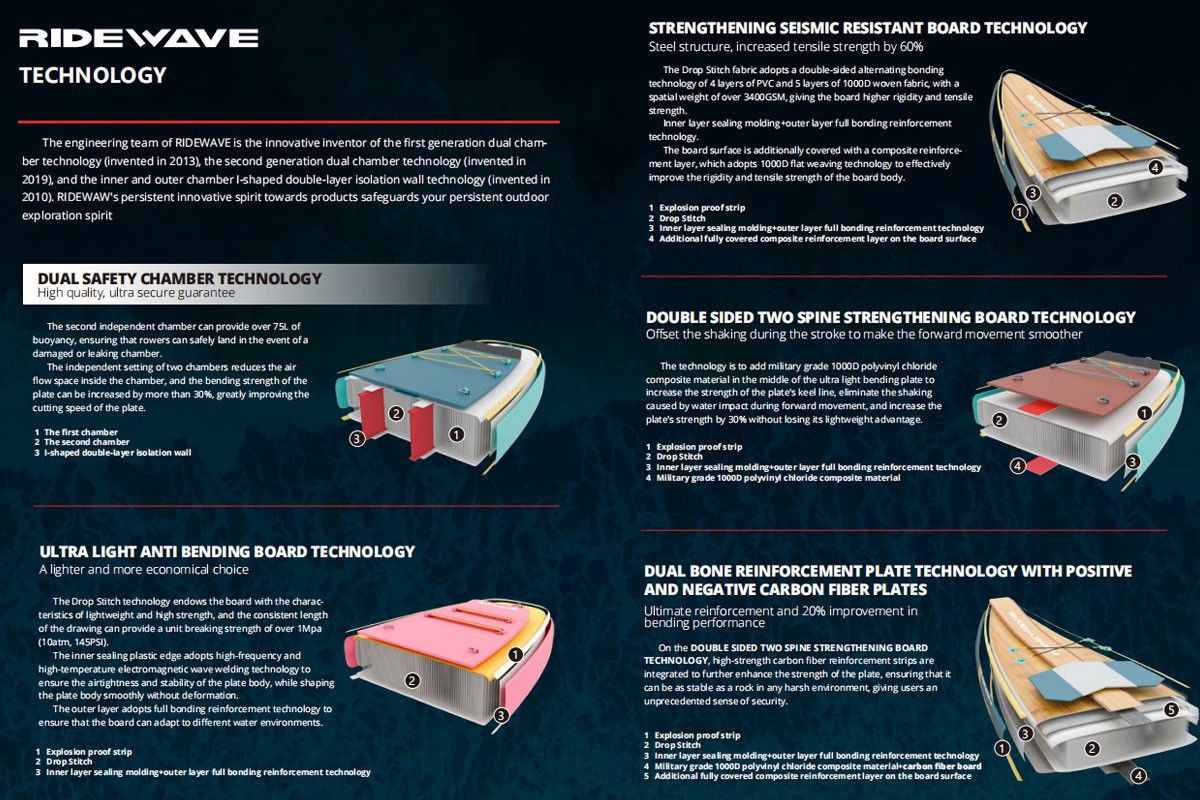OEM VS. ODM: Which Is Better For Your SUP Business?
Jun 18, 2025
Leave a message
The global paddle board market has been expanding rapidly, especially since the outdoor lifestyle boom in recent years. By 2025, more entrepreneurs are entering the Stand-Up Paddle Board (SUP) business than ever before. Whether you are launching your first water sports product or expanding your brand into the SUP category, one of the first big decisions you'll face is choosing your manufacturing model: OEM (Original Equipment Manufacturer) or ODM (Original Design Manufacturer).
This choice will affect everything - from product cost and development time to brand positioning and scalability. In this comprehensive guide, we'll explain what OEM and ODM mean in the SUP industry, compare their pros and cons, share real case studies, and help you figure out which path is best for your business. You'll also discover how Ridewave, a leading inflatable paddle board manufacturer, supports both models with flexible, customer-friendly services.
What Is OEM in the SUP Paddle Board Industry?
Customized Board Structure
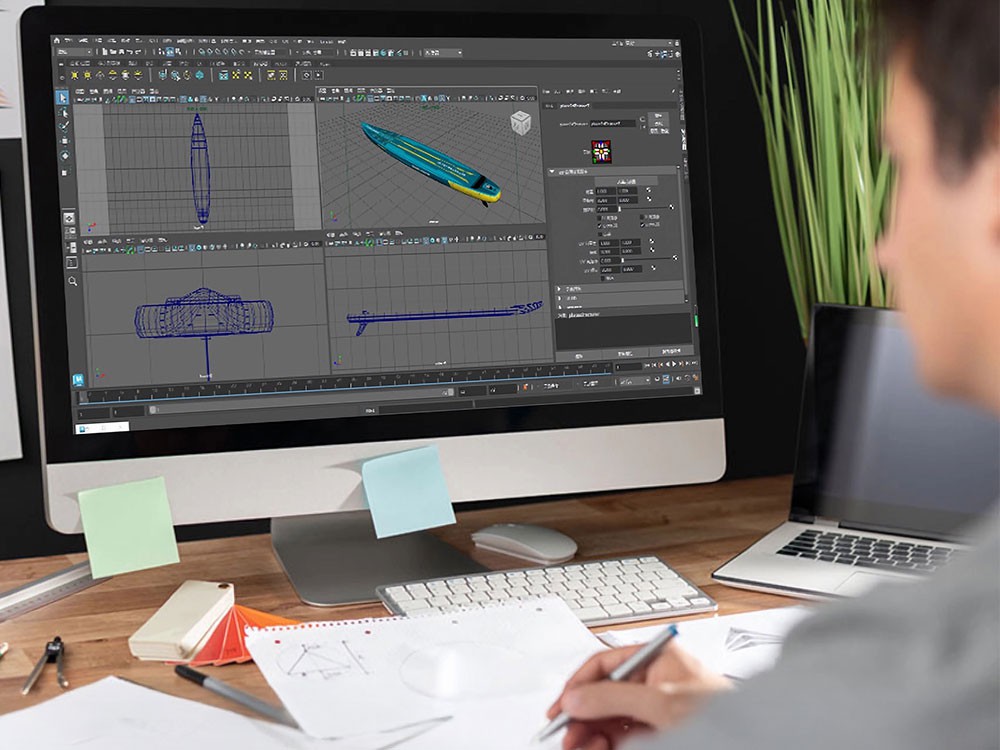
The most critical part of OEM production is the core board design. Unlike ODM (Original Design Manufacturer) where you choose from pre-made molds.OEM allows you to build everything from the ground up.
This usually includes:
Board Shape and Dimensions: You can define whether your board should be all-around, touring, racing, yoga, or multi-person, and tailor its length, width, and thickness to meet your brand's goals.
Rocker Line and Outline: The curvature of the board (rocker) affects how it glides on water. With OEM, you can fine-tune this to suit flatwater, surf, or all-terrain performance.
Tail and Nose Shape: Square tails for better stability, pointed noses for speed-every detail is yours to decide.
✅ Ridewave works closely with OEM clients using advanced 3D CAD tools to turn sketches and ideas into high-precision board blueprints.
Material Selection and Technology
Materials define durability, weight, and stiffness. In OEM projects, you can specify every layer and component of the paddle board:
Drop-Stitch Fabric Density: Options typically range from 240D to 1000D, affecting stiffness and strength.
PVC Layers: Choose between single, double, or fusion-layer PVC depending on your budget and performance goals.
Deck Pad Texture and Color: From crocodile texture to diamond groove EVA, your brand can choose the grip style, color, and even include custom logos or patterns.
Chamber Type: Want dual chambers for extra safety? Ridewave was the first in the industry to commercialize this design and can support complex structures confidently.
🛡️ Ridewave's R&D team introduced the I-beam dual-chamber system in 2013 and upgraded it in 2019-your OEM project benefits directly from this innovation.
Custom Accessories and Packaging
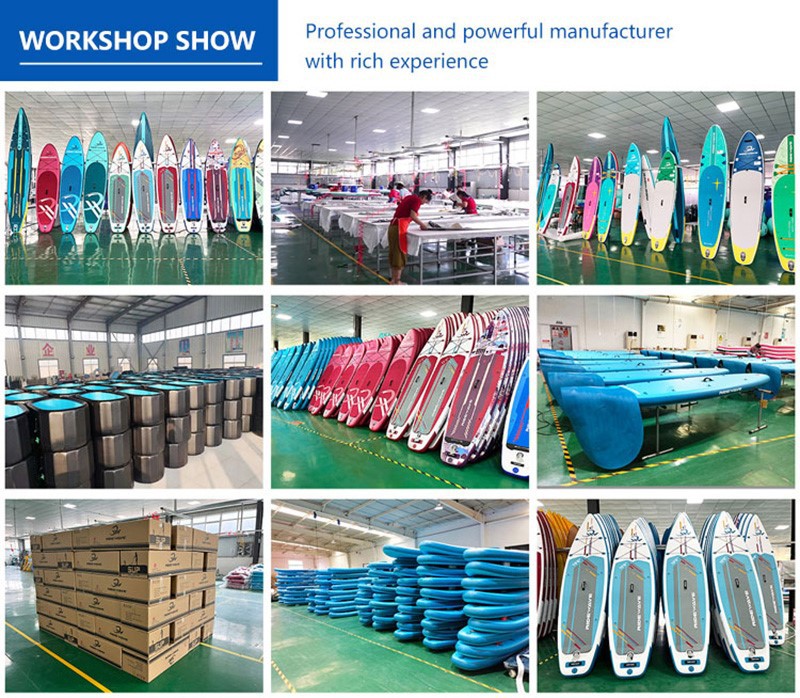
OEM is not just about the board-it's about the full product experience. Most successful paddle board brands stand out because their packages feel premium and cohesive. OEM projects allow you to control:
Fin Systems: Choose between slide-in fins, US box fins, or even custom-designed options.
Paddles and Pumps: Decide on material (aluminum, fiberglass, carbon) and performance features.
Leashes and Carry Bags: Add your own logos, fabrics, and ergonomic improvements.
Packaging: From kraft-style eco-boxes to glossy printed cartons with barcodes, QR codes, and instruction manuals.
📦 Ridewave helps OEM partners design space-saving packaging for maximum container efficiency-an advantage in global shipping logistics.
What Is ODM in the Paddle Board Industry?
ODM stands for Original Design Manufacturer. This is a more simplified and faster approach to launching your own paddle board line. Instead of creating a new board design from scratch, you choose from a selection of pre-designed and tested boards made by the manufacturer. Then, you add your branding elements-logo, colors, accessories, and packaging-and the product is ready for production.
Who Should Choose ODM?
ODM is especially attractive for:
-
Startups and Entrepreneurs: If you want to launch a paddle board brand without months of design and sampling work, ODM gets you there faster.
-
E-commerce Sellers: For platforms like Amazon or Shopify, ODM allows you to test multiple SKUs with lower risk and quick turnaround.
-
Retail Chains and Wholesalers: For businesses that want to expand their product line with high-quality, ready-to-sell items under their own brand.
🧠You don't need deep technical knowledge or R&D capabilities to succeed with ODM. The manufacturer has already done the heavy lifting.
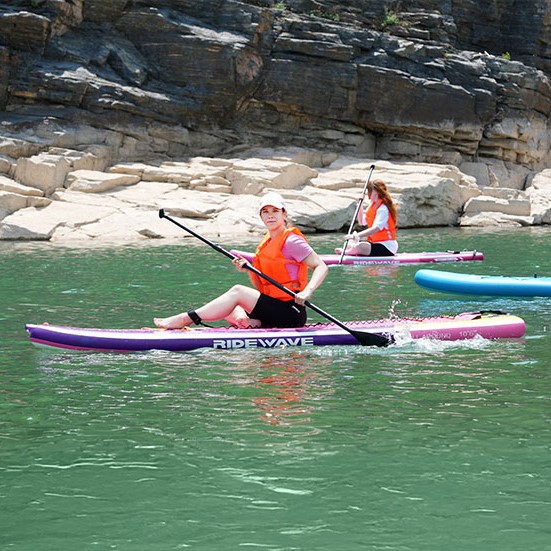
What Ridewave Offers with ODM
At Ridewave, we offer a robust selection of over 30 ODM-ready paddle board models, each developed based on years of testing, customer feedback, and performance evaluation. These models cover the most popular use cases in the market.
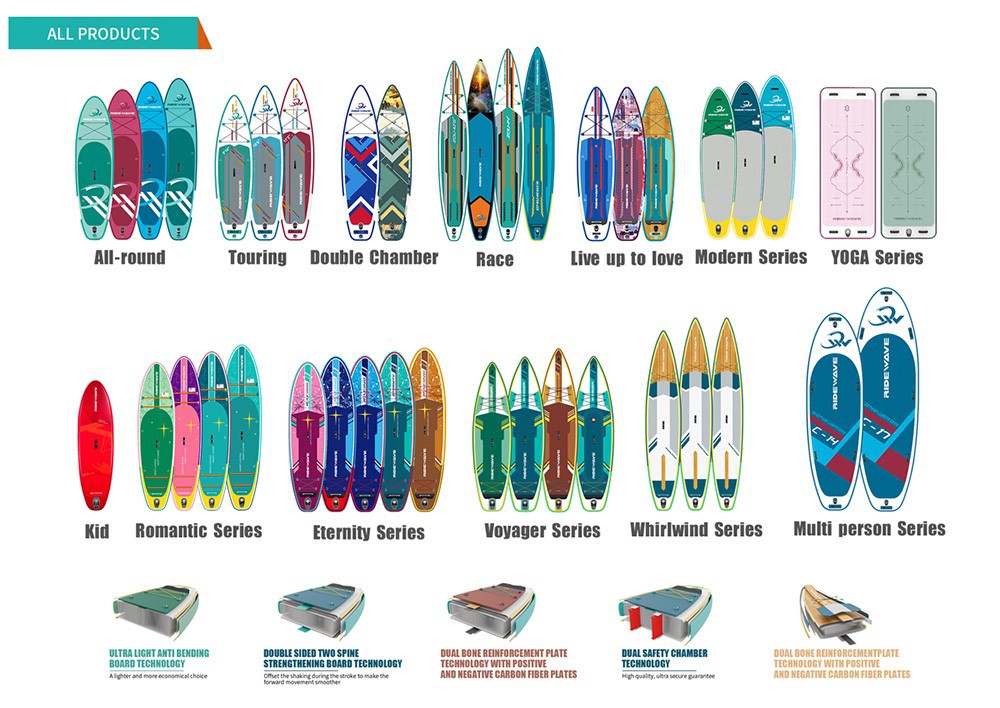
Board Styles Available:
-
All-Around SUPs – Balanced boards for beginners and casual paddling
-
Touring Boards – Longer and narrower for better glide on flat water
-
Yoga Boards – Extra-wide for stability, ideal for fitness routines
-
Fishing Boards – Equipped with bungee tie-downs and gear mounts
-
Kids' SUPs – Shorter and lighter boards for children
🛶 Each Ridewave ODM model is built using durable PVC, drop-stitch core, and reinforced seams-ensuring long-lasting performance and customer satisfaction.
⚙️ Optional Feature Upgrades:
To make your ODM boards stand out, you can choose from a range of optional upgrades:
-
Kayak seat mounting D-rings
-
GoPro/action camera holders
-
Carbon paddle upgrades
-
Soft or reinforced handles
-
Dual-layer or fusion-layer construction
💡 Even though you're not designing from scratch, ODM still offers a high degree of flexibility to make the board match your brand and audience.
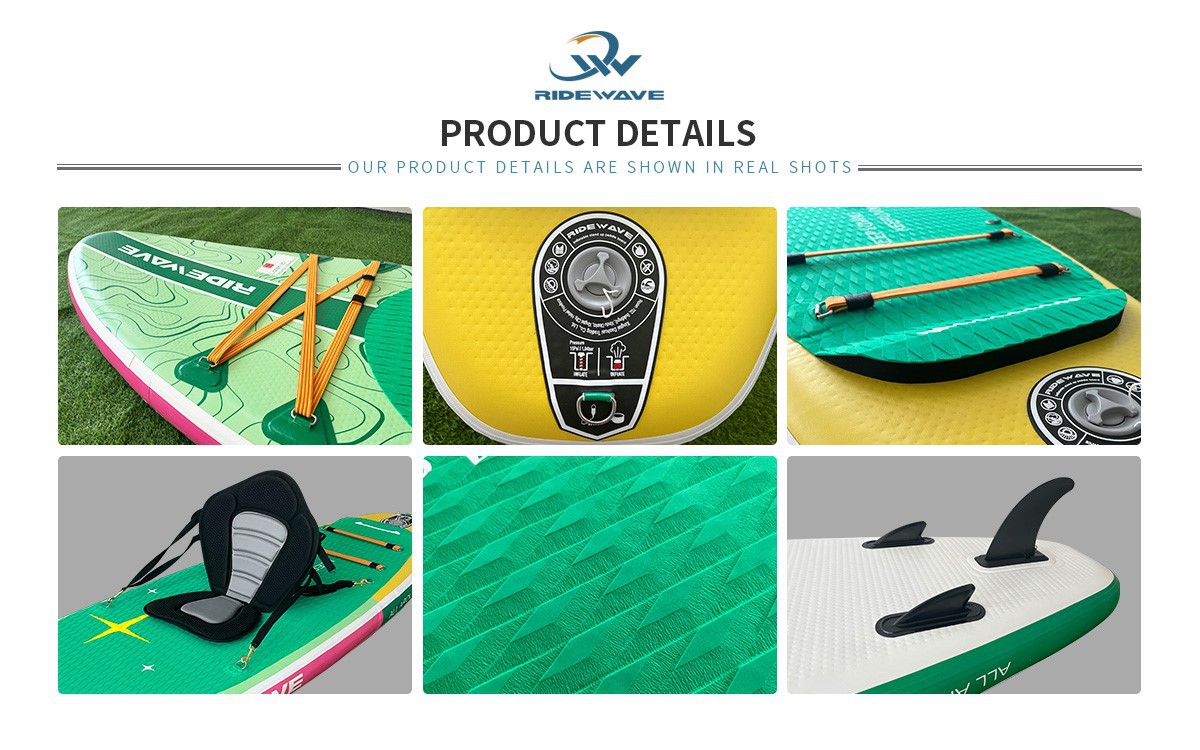
Customization Options in ODM
Although the core design is fixed, Ridewave's ODM program allows you to customize the board's appearance and branding in the following ways:
-
🎨 Full Deck Graphics: Apply your brand's logo, pattern, or graphic art to the top of the board.
-
🟣 Color Themes: Choose from various pre-set color palettes, or select a custom mix to reflect your brand's identity.
-
🧳 Branded Accessories: Add your logo to paddles, carry bags, ankle leashes, and even repair kits.
-
🌍 Instruction Manual Localization: We support multi-language manuals and barcode customization for different sales regions.
✍️ ODM lets you present a professional, fully-branded product without going through the complexities of full product development.
Speed and Convenience
One of the biggest advantages of the ODM model is the fast delivery timeline. Because the board molds, materials, and components are already in stock or pre-configured, production can begin almost immediately.
-
⏱️ 15–30 Days Shipping Time
If you go with standard packaging and simple logo placement, most orders can be shipped in as little as two to four weeks. This allows you to react quickly to seasonal demand or launch timelines. -
📦 Low Minimum Order Quantities (MOQ)
Ridewave's ODM models are available with flexible MOQs-great for new businesses or brands testing the waters.
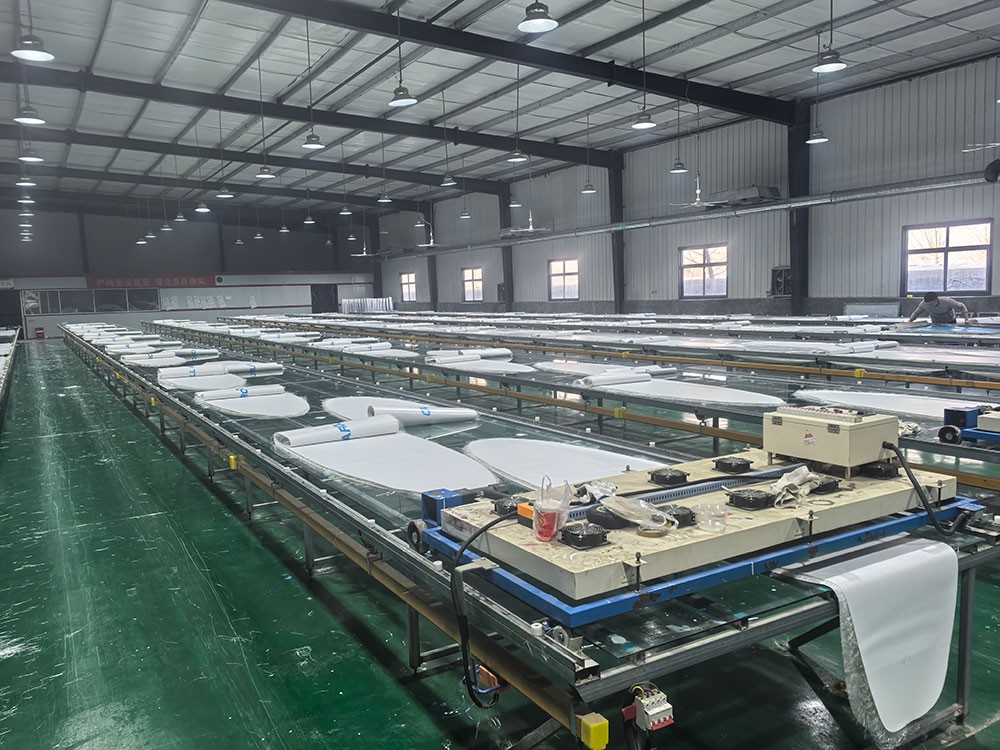
Why Choose Ridewave for ODM?
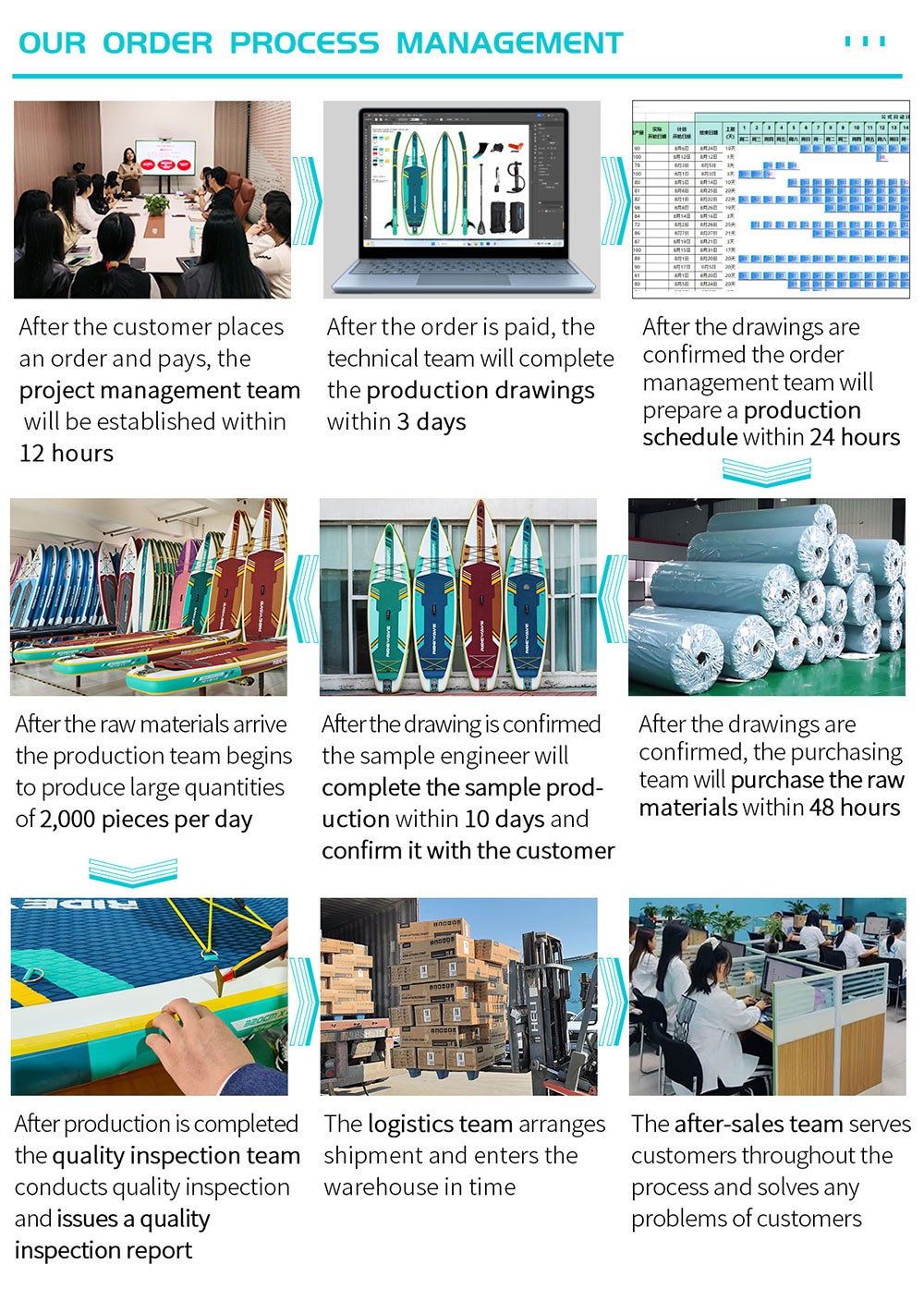
With more than 10 years of SUP manufacturing experience, Ridewave understands what it takes to deliver top-quality boards under tight deadlines.
Here's why brands trust us with their ODM needs:
✅ 30+ Proven Designs – Each board has been tested and optimized based on global customer feedback.
✅ Production Transparency – You receive updates throughout the manufacturing and packaging process.
✅ Free Marketing Support – Professional photos and short promotional videos included with ODM orders.
✅ Flexible Branding Options – From board graphics to instruction manuals, everything can reflect your brand.
✅ Global Shipping – We handle logistics to major ports and can support drop-shipping if needed.
📸 You focus on selling and scaling your business-we take care of the rest.
Key Differences Between OEM and ODM
| Feature | OEM | ODM |
| Design Control | Full control (you create) | Limited (factory-created design) |
| Time to Market | Slower (4–10 weeks development) | Faster (15–30 days branding + production) |
| Development Cost | Higher (includes design, mold, sampling) | Lower (no design cost) |
| MOQ (Minimum Order) | Typically higher (300–500 units) | Lower (as few as 50–100 units with Ridewave) |
| Branding Flexibility | Complete (custom everything) | Partial (color/logo/packaging customization) |
| Intellectual Property | Yours entirely | Usually shared design (non-exclusive) |
| Innovation Potential | High (custom innovation allowed) | Medium (may include add-ons but not full design) |
Pros and Cons of OEM Advantages
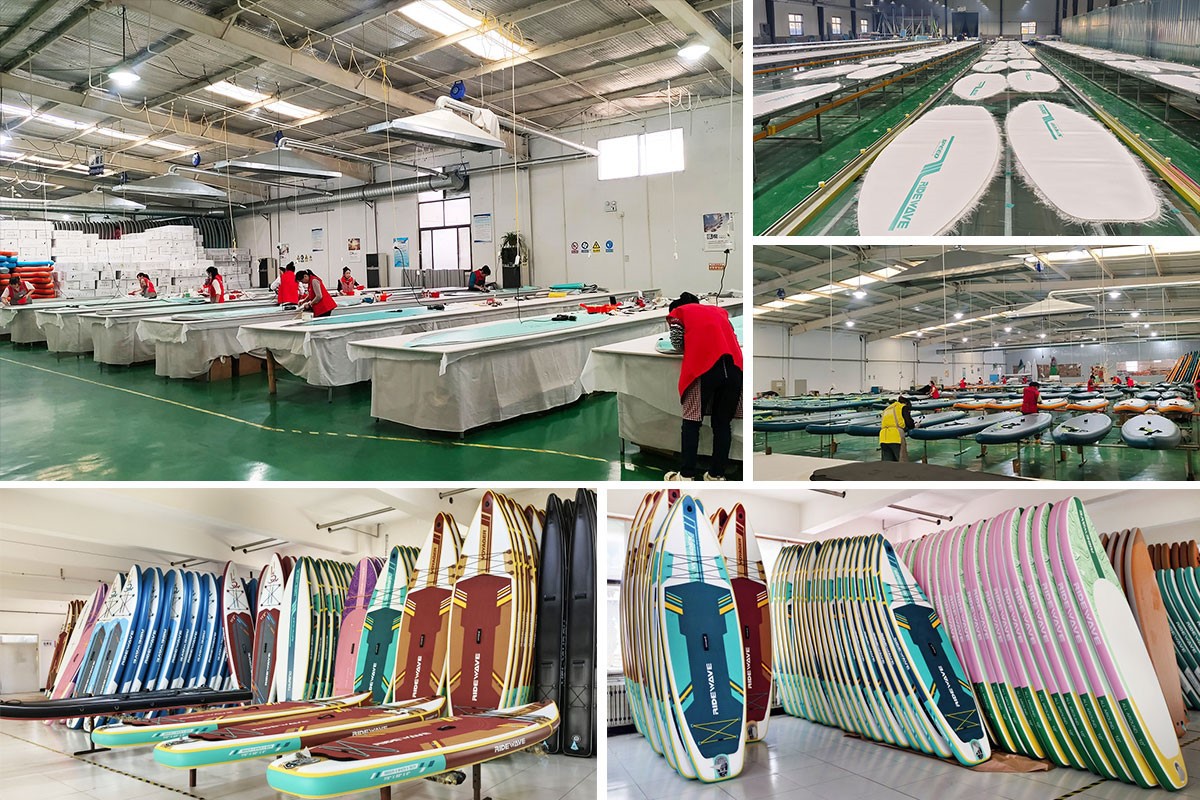
Full design freedom: perfect for brands targeting a niche audience.
Higher retail value potential due to uniqueness.
Complete control over quality, features, and performance.
Disadvantages:
Higher cost and risk at startup.
Longer development time.
Requires technical knowledge or a strong manufacturing partner.
Ridewave OEM Advantage:
Ridewave's experienced engineering team simplifies OEM for you. With decades of inflatable technology, we help turn your ideas into reliable, production-ready paddle boards.
Pros and Cons of ODM Advantages
Quick to launch with minimal barriers.
Ideal for seasonal testing or trending segments.
Low MOQ and low upfront development costs.
Disadvantages:
Less control over structure and design.
Product may be similar to what other brands offer.
May not suit long-term premium branding.
Ridewave ODM Advantage:
Even with ODM, Ridewave offers flexibility. Our ODM boards can include upgraded accessories, improved seams, special deck prints, and premium packaging - helping your brand look and feel unique.
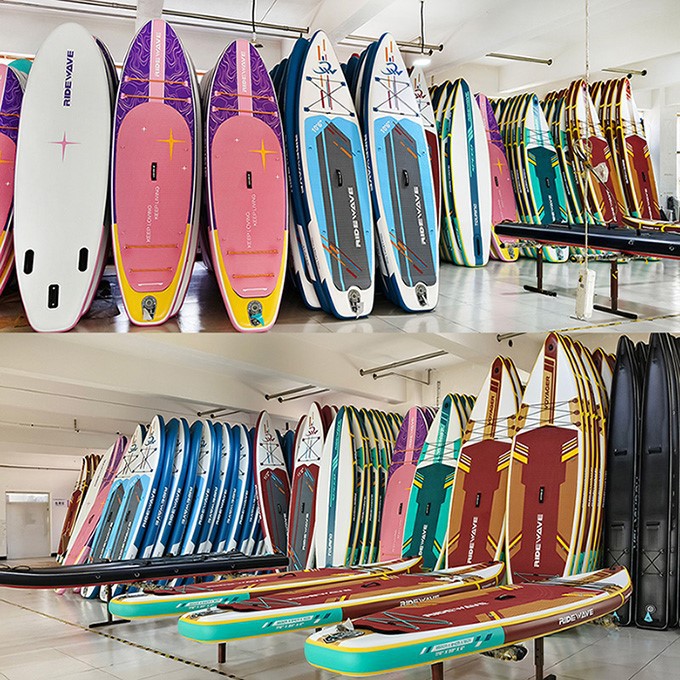
Which One Is Right for You?
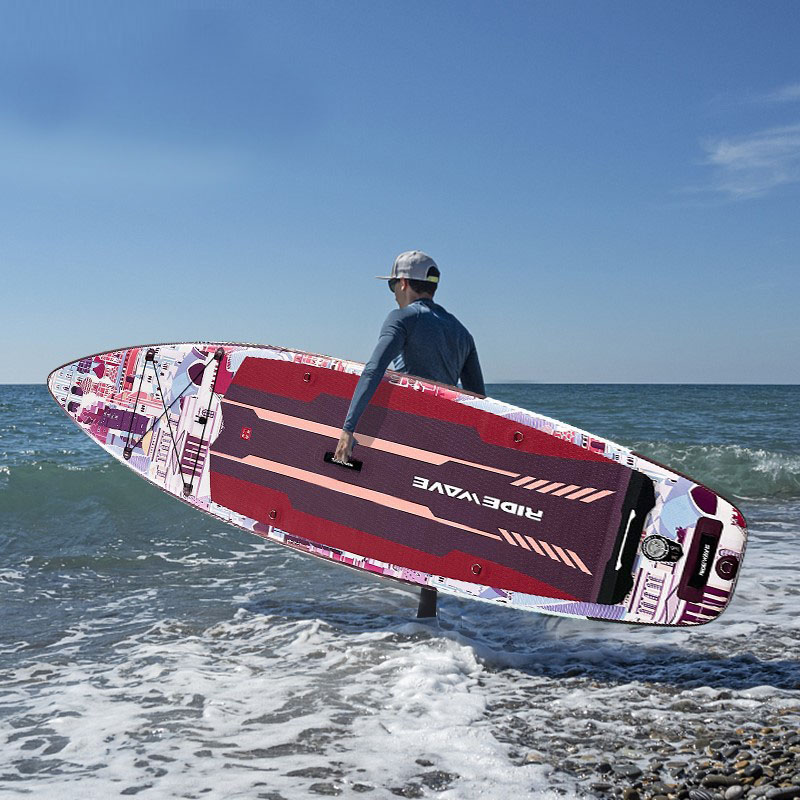
Ask these key questions:
Is time or uniqueness more important?
Are you entering a general market or a niche segment?
Do you have product development experience?
Are you aiming for long-term growth or short-term sales?
Scenarios:
New e-commerce seller → ODM is fast and low-risk.
Outdoor lifestyle brand with design team → OEM builds value and uniqueness.
Ridewave's Hybrid Approach: Start with ODM, test the market, scale with OEM. Many of our clients follow this model successfully.
Ridewave's Hybrid Model: A Smart Growth Path
We understand that not every business can start with OEM. That's why Ridewave offers a smooth upgrade path:
Step 1: Start ODM
Choose a proven board, apply your brand, test your market.
Step 2: Upgrade
When sales stabilize, add custom deck pads, special handles, or exclusive patterns.
Step 3: OEM Transition
Move into full design control with exclusive board shapes and proprietary accessories.
Ridewave guides you through each step with factory support, visual materials, and cost forecasting.
Ridewave Technology Makes the Difference
hether you choose OEM or ODM, Ridewave's production capabilities enhance product reliability and user satisfaction:
Dual-chamber safety tech: More floatation and emergency chamber
I-shaped isolation wall: Improves stiffness and structure
3-level QC system: Every board is inspected 100% before packing
Custom packaging: Strong, color-printed boxes that maximize container space
Free product photography & videos: Use them in your marketing or Amazon listings
Choose What Fits Your Business VisionBoth OEM and ODM can be powerful tools to grow your SUP brand. If speed, simplicity, and low entry cost are important, ODM is the right start. If you want total control, high-end branding, and product uniqueness, go OEM.
Ridewave supports both paths - with technical knowledge, customization flexibility, and a commitment to your long-term success. Talk to us today and build your paddle board business with confidence.
Related Blog Articles You May Like
Looking to go deeper? Check out these related reads to support your business:
1.Top Features B2B Buyers Should Look for in a Paddle Boards Manufacturer
Discover the must-have features top B2B buyers demand in a reliable and scalable SUP manufacturing partner.
2.Why More Paddle Board Distributors Are Choosing Ridewave in 2025
Explore the key reasons distributors worldwide are switching to Ridewave for high-quality, flexible SUP solutions in 2025.
3.How to Choose the Right Paddle Boards for Your Rental Business
Learn how to select the best paddle boards for durability, stability, and customer satisfaction in your rental fleet.
4.Common Mistakes to Avoid When Importing Paddle Boards from China
Avoid costly errors by understanding the common pitfalls in the SUP import process-and how to manage suppliers effectively.
5.Top 10 Paddle Board Features For 2025 Distributors
Discover the top 10 must-have features that paddle board distributors should prioritize in 2025 to stay competitive and satisfy growing market demands.
These articles will give you expert advice, real-world tips, and industry insight to help you grow your paddle board brand the smart way.


